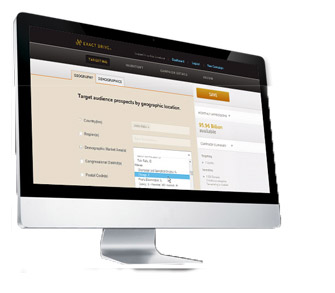 The online advertising industry is strong and here to stay. However, as 2012 comes to a close, many articles are written that outline the “predictions for 2013,” “top advertising stories of 2012,” “five reasons why the online advertising industry will fail in 2013,” and so on and so on. These articles are fun to read and some are even useful and insightful. Instead of pretending that I have some secret insight into the future of the online advertising industry or a knowledge base significant enough to accurately outline what’s to come in 2013, I would rather share a couple suggestions. Online advertising is a fast-moving, ever-changing industry and sometimes we are moving a little too fast to stop and reflect on why we think what we think and why we do what we do.
The online advertising industry is strong and here to stay. However, as 2012 comes to a close, many articles are written that outline the “predictions for 2013,” “top advertising stories of 2012,” “five reasons why the online advertising industry will fail in 2013,” and so on and so on. These articles are fun to read and some are even useful and insightful. Instead of pretending that I have some secret insight into the future of the online advertising industry or a knowledge base significant enough to accurately outline what’s to come in 2013, I would rather share a couple suggestions. Online advertising is a fast-moving, ever-changing industry and sometimes we are moving a little too fast to stop and reflect on why we think what we think and why we do what we do.
Media Buyers Are Media Buyers, Not Creative Directors
Online digital media buyers should focus on buying media on the Internet. They are to implement a strategic digital media plan and advertise on behalf of their clients. Media buyers can purchase media on the Internet in many ways, be it basic Flash banners, pre-roll video ads, dynamic display ads, text ads on search engines, and so on. You get the point. So, if you are a media buyer and are in a rush to launch your online campaign, that doesn’t mean you should pretend you can easily and successfully slap on your “creative director” hat and have a go.
Time and time again I run into media buyers that need a campaign launched but their creative set isn’t finished or doesn’t meet the technical creative requirements, such as size, animation, and branding limits. The next thing I know they are adjusting the creatives themselves (negatively impacting the quality of the creatives), or farming them out to some template-focused hack shop.
In 2012, the online advertising industry witnessed (and hopefully learned) the importance of a properly designed, implemented, and executed creative set. It is the creative that is being seen by the potential customer at the end of the day anyhow and its importance should not be taken lightly, rushed, or managed by a media buyer or any other person not directly living and breathing within the creative team. Almost every time, the quality level of a creative keenly influences the results of an online advertising campaign. Let’s keep this in mind as we head into 2013.
Programmatic Media Buying Is Here to Stay, Accept It
Being able to self-manage your online campaigns or execute online media buying through programmatic methods is both cost effective and operationally efficient. Naturally, naysayers exist, working to poke holes in the programmatic media buying condom and focus only on a short-list of imperfections. My assumption is that these people also hated “The Hobbit” and firmly believe that Gisele Bündchen is overweight. In short, they are haters that are nutritionally deficient in Vitamin Innovation and Vision.
Certainly, mixing in slices of direct publisher advertising into your media buy has its benefits. That said, the days of calling 50 different local newspapers in 36 separate cities only to end up managing 50 different insertion orders, pricing structures, reporting interfaces, and manually executing optimization tasks are over. Programmatic media buying is here to stay and it’s only getting more efficient, more effective, and stronger all around. Get on board, accept it, and implement the method into your offered list of services.
Stop Ragging on the Online Advertising Industry
This may seem like common sense, but people within the online advertising industry need to stop ragging and being so negative about the online advertising industry. It is a multi-billion dollar industry with a stable growth forecast, intense innovation, passionate progression, and a positive contributor to the economy.
The online advertising industry generates tens of thousands of jobs within the United States and around the world. Of course it isn’t perfect, but what industry is perfect? Take a step back from complaining, stop focusing on the imperfections, and acknowledge all that has been accomplished. Compare it to the many declining industries that exist and start appreciating that the online advertising industry is one of the more exciting and successful industries around.
Retire “ASAP”
That’s right. Stop using the acronym ASAP in nearly every email you send out. It is overused, usually not necessary, and often comes across as a rude way to communicate. You don’t walk into a bar, order a beer, and tell the bartender that you need it ASAP, without being perceived as being a rude weirdo. Nor do you go buy a ticket for a movie and demand they play it ASAP, without, again, being perceived as a rude weirdo. Both examples wouldn’t result in you receiving results any faster. The bartender will serve you as soon as possible depending on the current orders from the other existing customers and the movie will start based on an existing schedule, regardless of your demand.
There’s a time and a place to say ASAP, and within almost every single email you write is not the place. Use the acronym wisely and as infrequently as possible. There are many other ways to more effectively express to your business partner or colleague that you need a quick turnaround than rudely writing ASAP in bright red bold letters. Like most things in life, maintaining a high level of common sense while limiting selfishness will get you farther than doing the opposite.
Article was original published by Tim Nichols on January 2nd, 2013 at http://www.clickz.com/clickz/column/2233227/suggestions-for-the-online-advertising-industry-in-2013


